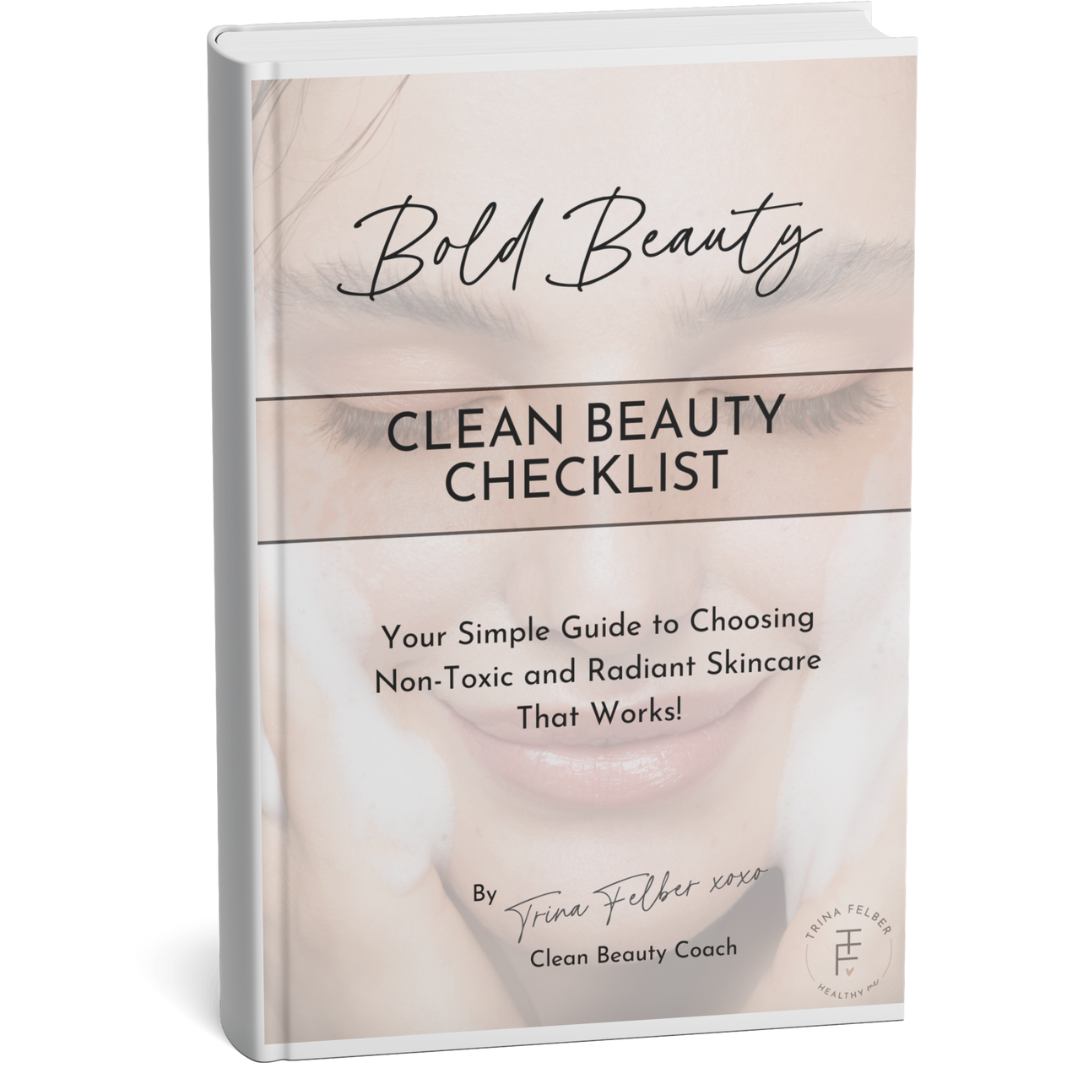Ladies, let’s have a heart-to-heart.
You’ve spent years perfecting your skincare routine—serums, creams, lotions, potions—but did you know that some of those beauty boosters might be the very culprits behind your mood swings, weight gain, and even your skin acting out? It’s time to talk about hormone disruptors, and how they’re sneaking into your daily routine. These chemicals can mess with your hormones, and for women going through menopause, that’s the last thing you need!
So, how do we detox your beauty shelf? Let’s start with identifying five common hormone disruptors and what to swap them for. Ready to glow from the inside out?
1. Offender: Parabens
The Villain: These preservatives (methylparaben, propylparaben, etc.) are everywhere, from your moisturizer to your foundation. Parabens mimic estrogen in your body, and when your hormones are already in flux (hello, menopause!), that’s a recipe for havoc.
The Swap: Opt for products labeled “paraben-free.” natural preservatives like radish root ferment instead of parabens, to keep your skin hydrated and balanced—without the hormone drama.
2. Offender: Phthalates
The Villain: Found in anything from fragrances to nail polish, phthalates disrupt the endocrine system, leading to imbalanced hormones. Worse, they love to lurk under the term “fragrance” on product labels, making them hard to spot!
The Swap: Go fragrance-free or switch to naturally scented products. This multitasking product avoids synthetic fragrances, giving you great coverage and glowing skin without the hidden hormone hit.
3. Offender: Oxybenzone
The Villain: Commonly found in chemical sunscreens, oxybenzone is a known endocrine disruptor that messes with your hormones by mimicking estrogen. If you’re already dealing with menopausal hot flashes, skin breakouts, or weight fluctuations, this ingredient could be exacerbating those symptoms.
The Swap: Switch to mineral sunscreens, which use zinc oxide instead. It’s gentle on your skin and won’t send your hormones into overdrive, protecting you from the sun while keeping your hormones in check.
4. Offender: Triclosan
The Villain: Found in some antibacterial soaps, cleansers, and even toothpaste, triclosan is linked to hormone disruption, particularly thyroid function. Over time, it can throw off your hormone balance, which could worsen fatigue, weight gain, and mood swings.
The Swap: Choose natural alternatives like handcrafted soap bars. These biodegradable, chemical-free bars are gentle yet effective, perfect for keeping your skin clean without disrupting your hormones
5. Offender: Retinyl Palmitate (Vitamin A Derivative)
The Villain: While retinoids are beloved for their anti-aging properties, retinyl palmitate has been flagged for its potential to act as a hormone disruptor. This ingredient can interfere with estrogen, which is not ideal if you’re already experiencing menopausal symptoms like hot flashes and weight gain.
The Swap: Swap it for Primal Life Carrot Seed Oil or Moisturizer, a natural vitamin A alternative with similar anti-aging benefits, minus the hormonal interference.
Other Hormone Disruptors to Watch Out For
In addition to these five common offenders, here’s a list of other endocrine disruptors often found in beauty products that could be exacerbating your perimenopausal or menopausal symptoms:
- BPA (Bisphenol A): Found in plastics and sometimes in the packaging of beauty products, BPA mimics estrogen and can disrupt your natural hormone levels.
- Dioxins: These are often present in products that contain synthetic fibers, such as tampons or wipes. Dioxins can interfere with reproductive hormones.
- Heavy Metals (Lead, Mercury, Arsenic): Found in some lipsticks, eyeliners, and skin-lightening creams, these metals can affect hormone production and regulation.
- Formaldehyde: Used in nail polish, hair treatments, and some cleansers, formaldehyde is a known carcinogen and hormone disruptor.
- Sodium Lauryl Sulfate (SLS): Found in many shampoos and cleansers, SLS can irritate the skin and disrupt hormonal balance over time.
Why It’s So Important to Pay Attention to Hormone Disruptors in Skincare
So, why should you care about hormone disruptors, especially in skincare? Here’s the deal: your skin is your body’s largest organ, and what you put on it matters. Hormone disruptors can sneak into your bloodstream through your skin, throwing your hormones out of whack. For women in perimenopause or menopause—already facing hormone fluctuations—this can intensify symptoms like:
- Weight Gain: Hormone disruptors that mimic estrogen can lead to stubborn weight gain, particularly around the abdomen.
- Mood Swings and Anxiety: Imbalanced hormones can cause mood instability, and using products that further disrupt hormones only makes things worse.
- Skin Issues: Dryness, breakouts, and sensitivity can all be exacerbated by endocrine disruptors.
- Sleep Disturbances: Hormonal imbalances often lead to trouble sleeping, and certain chemicals in beauty products can worsen the problem.
When you have these symptoms, your doctor might prescribe a pill, a cream, or order lab work.
What they won’t ask you is, “What skincare products are you using?”
That’s because many doctors aren’t trained to consider how everyday beauty products—loaded with hidden chemicals—could be contributing to these issues. Understanding this connection is crucial for finding the root cause of your symptoms and taking control of your health.
Tips for Spotting Hormone Disruptors on Labels
This is obviously a lot to take in. It’s ok- deep breaths- there are some easy things to look for on labels that will be a dead giveaway for items to avoid.
- Look for “Fragrance”: If a product simply lists “fragrance” or “parfum,” it’s often hiding phthalates. Choose products that specifically state they are “phthalate-free” or use natural fragrances.
- Avoid “Parabens”: Parabens can be listed as methylparaben, ethylparaben, propylparaben, or butylparaben. Opt for preservative-free or naturally preserved options.
- Say No to “Oxybenzone”: Found in sunscreens, avoid this ingredient by switching to zinc oxide or titanium dioxide-based sunscreens.
- Choose Glass Over Plastic: BPA can leach from plastic containers, so opt for glass packaging when possible.
- Check for “Triclosan”: Found in antibacterial products, opt for triclosan-free alternatives or look for “antibacterial-free” on labels.
Knowledge is Power
Your skincare should make you feel beautiful, not wreak havoc on your hormones. By becoming label-savvy and swapping out products with hormone disruptors, you can take a big step toward balancing your body and your beauty routine. Remember, the goal is to enhance your natural glow—not sabotage it. So the next time you’re tempted by that new serum or cream, do a quick label check and ask yourself: is this working with my body, or against it?
Nest Step
Ladies, the next step in your clean beauty journey is simple: take control. Download the Clean Beauty Checklist to help you identify and eliminate hormone disruptors from your skincare routine once and for all. Armed with this guide, you’ll have the tools you need to detox your beauty shelf, make smarter product choices, and finally say goodbye to hidden chemicals that could be sabotaging your health.
Your beauty routine shouldn’t be a battleground. It’s time to reclaim it—your hormones will thank you, and so will your skin! Ready to glow naturally? Let’s do this! Download the checklist now and take the first step toward a healthier, more radiant you.


LEAVE A COMMENT